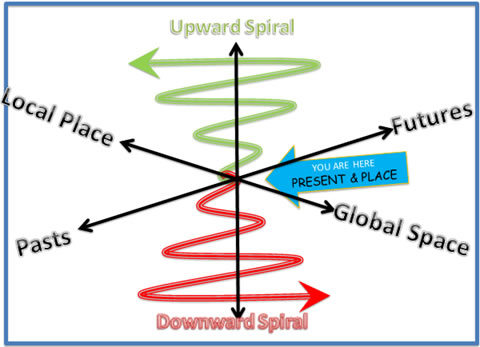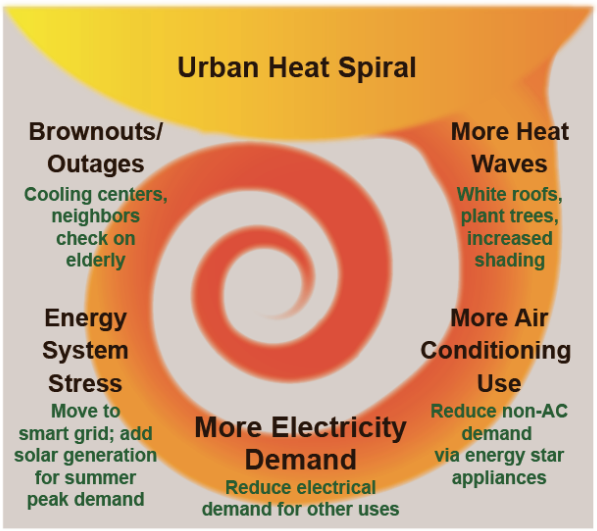I want to know about Spirals
The Primordial Spiral. We exist on a multi-armed spiral called the Milky Way.

Logarithmic Growth spirals (e.g. snail, our galaxy with a pitch of 12 degrees) are ubiquitous in nature: the Spiral of Life. Golden Spiral grows according to Golden Ratio (Fibonacci series).
I want to thank Ruby Galindo for composing this image of the Double Spiral for her 2012 Fall Mgt 448 semester project working with Sustainability Council
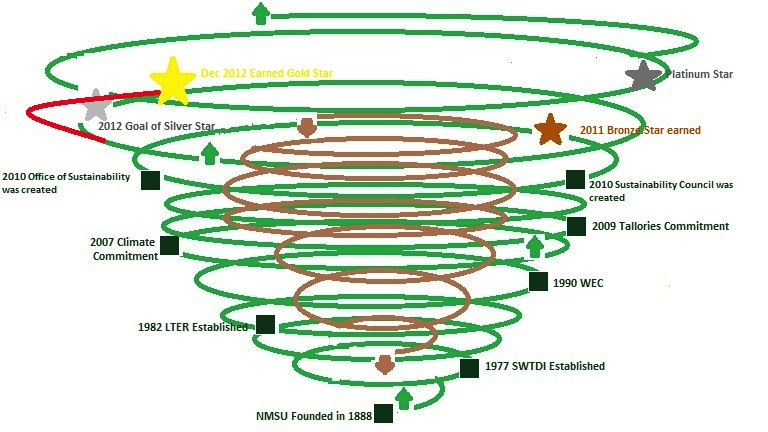
Figure 1 - Ruby Galindo's Double-Spiral of Up-surge of Sustainability at NMSU
The green outer spiral is upward momentum forces, and the inner brown spiral is downward momentum forces of the spiral forces. Http://peaceaware.com/sustainability for definitions of the 'datability' events depicted in the upward-green spiral. The point of the double spiral is that it is not an upward or a downward spiral, it is both upward and downward in the same spiralness.
The storytelling behind the double spiral. On November 30th 2012, we got the news. New Mexico State University (NMSU) took an up-draft, and our outer orbit took an upswing, Green pathway shot past Silver Star to a Gold Star rating (the Green path) and we are flushing out some major unsustainability (the Brown path). Ruby Galindo, a student in my Mgt 448 class, interviewed me about the evolution of the sustainability-double-spiral, its up and down paths being counter-forces in the same spiral-antenarrative. This is a double-spiral, not the usual either up or down spiral approach. Ruby and I plotted out the key turning points in each orbit, how they moves in an up-spiral or down-spiral within the same spiral. Spirals cannot exist as either/or, either up-spiral or down-spiral, rather it takes both forces to have eddies. The flushing out of the down-spiral is important. It will take self-denial, a post-human standpoint, not the individualism of the consumerist American society egoistic narrative.
"For instance, the dedication to green causes seldom if ever goes as far as adopting an ascetic lifestyle or even a partial self-denial" (Bauman, 2008: 42).
It is important that we do the quantum storytelling, develop and care for the history of what has happened at NMSU, and focus in on quantum materiality, not just epistemic or empiric materialist narrative rhetoric. It takes a long time with much shaping and creating to fashion a sustainability future. A number of important sustainability events happened, beginning, from what I can sort out, in 1963, and culminating in the Gold Star being award us Nov. 30th 2012 by Association for the Advancement of Sustainability in Higher Education (AASHE). Instead of a time line, as below, the physical geometry I have in mind is more the spiral with up and down draft forces as the previous figures illustrates. For Gold Star rating, NMSU's President Dr.. Pacheco actually wrote the “letter of approval” for the STARS® report submitted to AASHE.
Students can make a difference. The OASIS club at NMSU, for many years worked hard to persuade the upper administrative leaders of the university to embrace sustainability. In 2009 they succeeded in getting a President of the university to sign the Talloires Commitment and declare NMSU's Year of Sustainability. On Feb.. 19 2011, New Mexico State University's Faculty Senate unanimously passed a memorial to recognize the new Office of Sustainability at NMSU and support the plans and goals of the Sustainability Council. The memorial, proposition 08-10/11A, was sponsored by David Boje, in the College of Business, who authored the memorial; Read More » I actually asked a member of my department to take a break from Faculty Senate, so I could get voted in, then launch a Sustainability initiative. We made a commitment to join a more rigorous assessment group, and signed up for the Sustainability Tracking and Assessment Reporting System (STARS). We earned or Bronze Star rating in Step 2011. Faculty working together can make a difference,e convince an administration, its leaders to take the Green upward-spiral path.
Students can make a difference in sustainability, in getting administrative leaders on board. Students from my own Mgt448 consulting course in the Business College worked with joni newcomer (Office of Sustainability, and then Chair of Sustainability Council) to develop the Sustainability business plan, as did members of the 2011 Executive Team. In 2011 the doctoral seminar students in my systems theory course (Mgt 665) did interviews, and we co-wrote an article about the history of sustainability at our university. Aguirre, Boje, Cast, Conner, Helmuth, Mittal, Saylors, Tourani, Vendette, and Yan (2013) presented results of interviews with sustainability leaders at NMSU to the then president and provost, and VP of research in May of 2011. The ♥-of-Care was key to the presentation. PREZI presentation about history of Sustainability Research at NMSU. Just observing the university, doing the interviews, fashioning a business plan, were ways of bringing about small little wow moments of change. For example, upon seeing an illustration (below), the President and Provost, reacted, "we like that, the ♥-of-Care" in the middle of sustainability. We showed how all seven goals of the university, were each one about sustainability, and we secured commitments from upper administration make a difference.
Thanks 448 for your help in making this happen.
Click here for David M. Boje's (2012g) On Line Book" Quantum Spirals for Organization Consulting.
What follows is a brief summary, for more in depth treatment consult the book.
Here is a design for new NMSU Center for Sustainable Technology
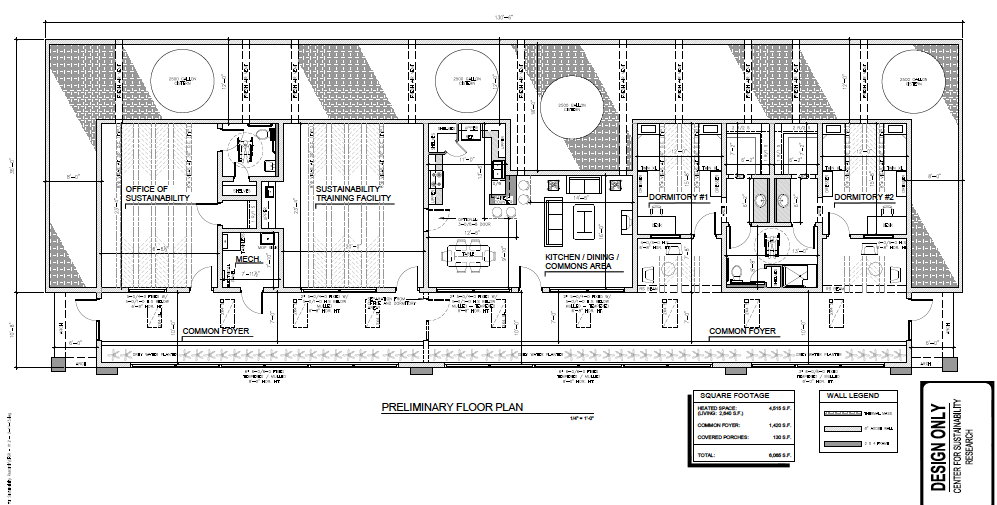
This is one of the proposed layouts for a Center for Technology and Sustainability at NMSU - contact Steve Self for more info
The spiralness of a small organization you are consulting is "indefinitely perfectible" (Derrida, 1993: 388). The double spiral is scymetrical rather than the usual unitary spiral (such as the Archimedean spiral that looks like stairwell, or the Logarithmic spiral that looks like the snail's shell). You as a consultant are involved in the "act of naming"( p. 379) some potential spiral-ness as your first ante (the before it is fully emergent). You can then make your second ante (the bet) that spiralness will emerge. I call these double meaning of 'ante' by the name, 'antenarrative' (the before-narrative emerges and the bet-on its arrival in the future). The before and the bet of your consulting co-creates with your client the organization spiralness, its movement from potential to actual. This is a joint-answerability between you the consultant and your client, to diagnose the potentiality in the processes of the organization, for the actual spiralness to emerge. You the consultant are answering (ethically) for your-self, and the client is answering for-them-self, in co-answerability. Double spiral has torsion-forces (double action of twisting & being twisted, upwards & downwards). The double-spiral-antenarrative (its before & bet) is more than just words, or a symbolic-drawing, it is naming that is a call for action, answering potential with action of disclosability, directionality, datability of the double-spiral-antenarrative-in-action, making it exist in space, time, and materiality. In short, to start with naming the potentiality, and to make it so. As a consultant your means of making it so, is SEAM's D-P-I-E cycle (Diagnose-Project-Implementation-Evaluation). Part of the Diagnosis is the Mirror-Effect meeting with your client to show and tell all the quotes you client from people about the processes' dysfunctions, the hidden costs, the untapped revenues (we call these root stems), etc. In the Mirror-Effect meeting you also share your own client recommendations for what to do about it. Put in simple terms, you do three D-P-I-E cycles (with Mirror-Effect meeting for each). As you work with the client you identify spiralness potentiality that can become actuality. Begin by identifying linear-processes, and cyclic-processes. The spiralness potential occurs as you recognize how cycles of production, for example, are not recurring in sameness from one cycle to the next. There are amplifications and contractions (excesses & deficiencies). It is easy for a cycle to become a spiral. Amplification of a spiral is defined as two or more successive amplifying cycles. This definition is weak because, it does not allow for contractions (the centring in, tightening orbits of a spiral). Spiral drawings that assume symmetry are also weak depictions (i.e. ever growing loops, or even tightening ones, such as in Logrithmic-spiral). The before-spiral, and the bet-of-future-transformation from cycle to spiralness begins in diagnosis of the degree of dysfunction (excess or deficiency) of one cycle of --- production, marketing, strategy, innovation, recruitment, job design --- to the next. Then it is a matter of finding the upsurge spiral moves and the downward spiral moves. Both are happening in the double spiral.
The online Q-Spirals book is about creating integrative Spirals. 'Q-Sprial' is defined as a 'Quantum' spiral, that can be studied with 11 D-questions in (Boje, 2012d) Boje's YouTube film on blacksmithing small organizations. The 9th question is about Drafts (up and down drafts of the environment of the organization).
Here is a depiction of an organization and its environment, with both upward and downward, amplifying and counteracting spiraling forces.
A Quantum Spiral is defined as a double process relation between organization and environment. In this next rendition of double spiral, the upward and downward meet at the center, in place, in time (past-present-future). It is not as elegant as Ruby's double spiral.
Figure 2- Quantum DOUBLE SPIRAL in Environment (it is two conic Archimedian Spirals)
The Quantum-Spiral is a double process, with upward and downward [material quantum] forces in the same organization, and moving in a dynamic environment that has several dimensions in this 3D image: Vertical are exchanges with the environmental turbulent-field itself, both the upward centrifugal forces (propelling up and outward) interacting with the downward centripetal forces (pulling down and away). For simplicity of illustration, we will call them upward spiral and downward spiral, but we mean them as one entity, not two, and at the apex (You Are Here), where the push and pull forces are the quite 'eye of the turbulent storm.' The two other axes are Space-Time. You are Here and Now, in the Present and in some Place. As things happen in the Present & Place, those emergences prompt new storytelling of the timescape, so many pasts are rehistoricized, and many future potentialities are possible. The landscape, its local and global aspects is the third dimension of the environment shown here.
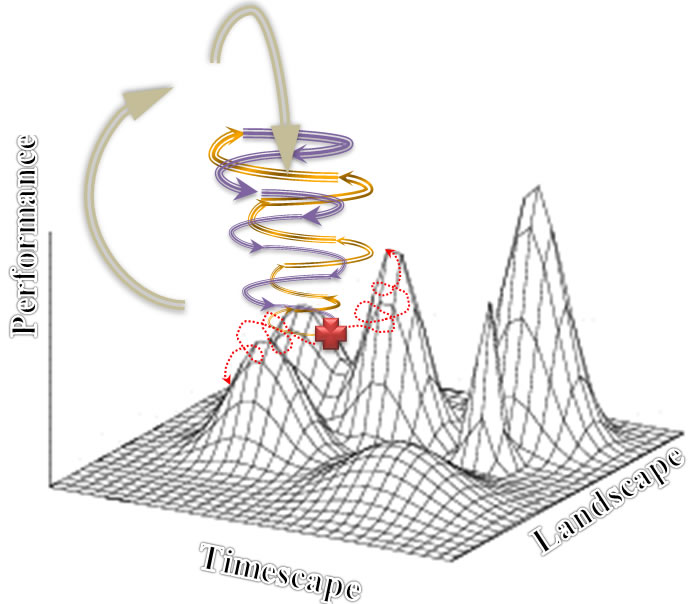
Figure 3- Q-Spiral in its Environment, about to Move
Another way to think of it is Q-Spiral have both upward and downward spiral directions of the organization, in an environment with three dimensions (landscape, timescape, and performance) (Source D. Boje July 2012).
Please document not only the double-spiral, but also its movement through an environment (of space-time-performance).
This is a Q-Spiral Model (Boje, 2012g). A Q-Spiral is defined as a 'Quantum'-spiral that has both upward and downward as well as centripetal and centrifugal spiraling directions in the same enterprise (indicated by the Gold & Purple arrows). In addition the double-spiral-antenarrative moves along trajectories in its environment. 'Q' stands for Quantum, meaning the spaces, times, and mattering of the organization processes (landscape, timescape and performance dimensions of the environment).
KEY:
- + Choice-Points where green is trajectory actually taken by organization from point ‘A’ to point ‘B’, and red dotted lines are trajectories not taken yet still remembered what might have been.
- Gold Arrows => Positive directions of organization Spiral Episodes going with flow of environmental updrafts and against the flow of environmental downdrafts
- Purple Lines => Negative directions organization Spiral Episodes going with flow of environmental downdrafts, and against the flow of environmental updrafts
- Red Dotted lines => Null paths not taken at choice-points
- Silver Arrows => Updrafts and downdrafts of the oscillations in the competitive environment
Three Dimensions of the Business Environment:
- Landscape is defined as “realistic problem-solving complexity with clarity” (Afuah and Tucci, 2012: p. 357; Kaufman, 1993, 1995). Landscape is spatial in combination of ways: perceptions of space, measured spaces, and meanings of space to participants.
- Timescape is defined as measured time, timing of strategies, retrospective-histories, and anticipated-futures (Adam, 1998).
- Performance is defined as the outcomes of strategies enacted in the environment. Higher peaks have greater performance opportunities, but steeper peaks have higher costs, and more organizations attempting to get there.
We will explain this below.
What is Triadic Storytelling? Let's start with Storytelling as a Method for Organization Consulting. There are three inter-acting aspects of Triadic Storytelling.

Figure 4 - Triad Storytelling Approach to narrative, living story, and antenarratives
Next is a more detailed depiction.

Figure 3B - Triadic Storytelling Approach has 3 perspectives: narrative, living story and antenarrative bridges between them
In Boje's (2001, 2008a, 2011) Triadic approach to storytelling, there are three interacting entities:narratives, living stories, and antenarratives. The dominant narratives that have a single plot, a monologic, and aim at generalizing into a single thematic structure.
Narratives are good for many things. Sometimes having a monologic, single-focus, 'strategic narrative' the focuses everyone's attention on several goals and action plans over the next year years, is a good thing. Other times, narrative strategies cater to some common problems with 'dominant narratives.' First they are stuck-in-the-past, and that means the past pattern is viewed as exactly the same pattern the future will hold. Second, in turbulent, complex environments, the organization needs to get unstuck from its past, and envision new directions. Third, the typical narrative strategy is highly linear (posing a Beginning, Middle, and one End), aka BME Narrative. The problem is that more complex turbulent environments have multiple futures, not just one. Fourth, in dominant strategy narratives, there is a linear, mechanistic understand of all time as unfolding from past->present->future. Rather than this clocktime, calendar-time linear progression of time's arrow, a more radical approach to 'storytelling strategy' is to look at time, as also arriving from the future, where a variety of futures are possible to choose from. In this radical view of time, as non-linear, and from future->present and future-past, we are taking a Heideggerian view of time. We also begin to understand what Barabar Adams (2009) calls 'timescape.' A timescape has multiple types of times, such as traditional clock time, Heidegger's (1962) time arriving ahead-of-itself affecting present and future, the timing of strategic choices given the adaptive choices in an environment with its own timescape, and how as Mead (1958) says the present emergence of suddenly novelty (e.g. innovation, changes in situation), will prompt a rehistoricizing of the past, and a re-futuring where multiple futures become possible paths to choose among.
What is narrative? A narrative since Aristotle (350 BCE) ash been defined as having a beginning, middle, end, a single plot, and as something that Greek theater could perform in a few hours. In contemporary time, a narrative is still a single plot, and it can be performed in the time it takes an elevator to go from 1st to 6th floor (about 90 seconds for the Elevator Pitch narrative). Narrative is backward looking, it projects that backward look onto the future as a prediction. You can ask about 'datability' the most significant 'datable' moments from the birth of the organization to now. A datable moment is like your birthday, your graduation date, etc. It stands out from all the routine dates you forget about. Narrative, however, is often a linear plot, with a beginning, middle, and end (BME), and most often just does not work. Why? Because we life in a non-linear world, and the past does not always predict the future

Figure 5 - BME linear narrative
Beginning-middle-end narratives causal chains of the past are predicted by the naive to repeat into the future (a very bad bet as a consultant or organization person). We live in a non-linear world, and the next three are about that. The worst consulting persuades clients to do linear processes in a non-linear world.
Dominant narrative strategies, most often, empty out the events and episodes of what my colleagues and I call 'living story.'
What is Living Story? Whereas the dominant narrative generalizes from past to the future, the 'living story' is a web of emerging relationships to more and more living stories in the Present. Living story is also about what gets left out, left behind, in-order-for dominant narrative to construct its generalized, abstract, schemata of the organization and its environment. A living story unfolds in-the-middle, is relational to many other living stories, and living stories are about Being-in-the-world, in a life path of a life. Since it is in-the-middle living story does not always have beginning or the end narrative demands. A living story has a place, a time, and a materiality. Some say it has a spirt, an aliveness. But it is not a place that is Euclidian, nor a time that is clocktime, or a materiality that is Newtonian physics. A living story is about Being-in-the-world of life, it is a time-future arriving into the Present, and a mattering Boje calls 'quantum' where our living stories are intra-active and inter-action with the materiality of living things. Living stories are about the life-path, unfolding, and it can involve futuring.
A living story is something I have developed in relationship to narrative and to antenarratives, as the triadic domain of storytelling discourse. I first encountered the idea when I began my colleagueship with Kaylynn Twotress in 1997, and the idea took on more aliveness with Jo Tyler's work. Living story developed more materiality in working with Cajete's and Vizenor's work on materiality in relation to story.
The third component of 'Triadic Storytelling' approach is, the antenarrative bridging that goes on between the dominant narratives and the living story webs.
What is Antenarrative Boje (2001) created the term and theory. Antenarrative defined as a 'before' narrative coheres, and a 'bet' on the future an how livings stories of your client are related to grander (one-voiced, abstract, monologic) narratives. The 'before' way of antenarrative is about prediction, the past recurring in the future. The 'bet' or gambling way is how to shape and create different futures, and that is a very different sort of antenarrative.
There are at least four types of antenarratives, bridging living story and dominant narrative: linear-antenarrative, cyclical-antenarrative, spiral-antenarrative, and rhizomatic-antenarrative. The 'before' antenarratives are 'linear-' and 'cyclical-antenarratives' of recurrence. The 'bet' ways are gambles on creating and shaping 'spiral-' and 'rhizomatic-antenarratives.'
These antenarratives are quite common in organizations and their environments. For example, an example of linear-anteanrrative is the PERT chart.
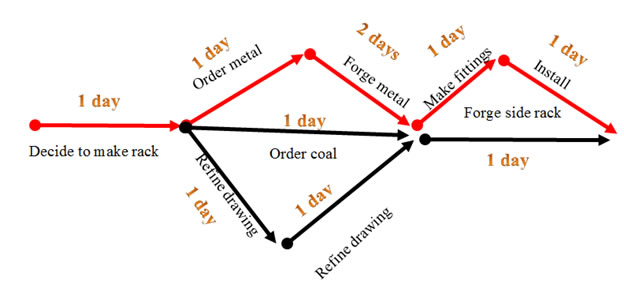
Figure 6 - PERT linear-antenarrative for building Boje's rack on his Harley-Davidson
Life cycles are depicted most often as a cycle of change. A common example of the cyclic-antenarrative is 'product life cycle.'
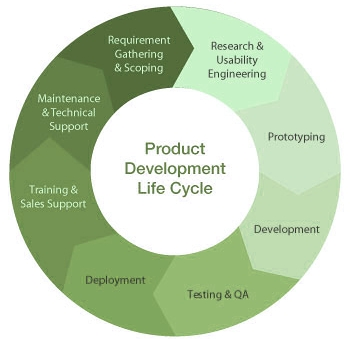
Figure 7 - Product Life Cycle - Antenarrative (Source).
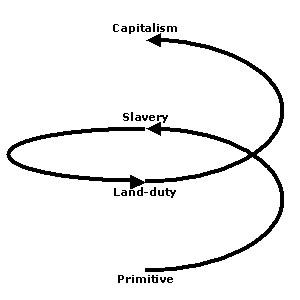
This spiral-antenarrative is a bridge between lots of living stories that are left out of the picture, and the simplifying grand narrative that somehow capitalism is a progressive improvement over what came out of the past. In this course we want to develop more accurate depictions of spiral processes.
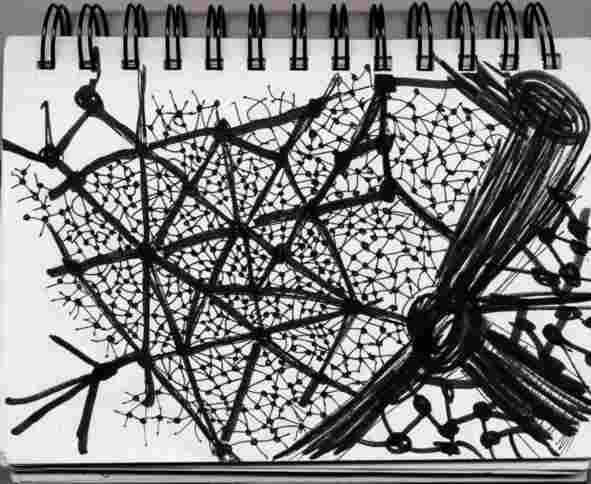
Figure 11 - Rhizomatic-antenarrative of Western Capitalism (source)
Rhizome comes from work of Deleuze and Guattari (1987) who describe the ways in which lines (vines & roots) run every which way, without symmetry.
Four ways of antenarrative bridge living story with narrative each have their own special sort of causality process:
 Linear-antenarrative process link between living stories emptied out to create a linear-antenarrative of the past that is predicted to repeat into the future. People assume linear causality, but it is rarely so.
Linear-antenarrative process link between living stories emptied out to create a linear-antenarrative of the past that is predicted to repeat into the future. People assume linear causality, but it is rarely so.  Cyclic-antenarrative process have stage-by-stage pasts that are predicted to repeat into the future. But most cycles, try as we might to control them, become spirals. If we could predict organization cycles, we would all be rich. Instead the veer out of that presumed control, which is why we need two more types. We also live in non-linear, and non-cyclic landscapes, and the next two are about that. The worst consultants do not even realize cycles are not all there is.
Cyclic-antenarrative process have stage-by-stage pasts that are predicted to repeat into the future. But most cycles, try as we might to control them, become spirals. If we could predict organization cycles, we would all be rich. Instead the veer out of that presumed control, which is why we need two more types. We also live in non-linear, and non-cyclic landscapes, and the next two are about that. The worst consultants do not even realize cycles are not all there is.  Spiral-antenarrative process that is from the future into the Present, and into the past. This is a radical approach to spacetimemattering. Spiral-antenarratives can be a good thing or a bad thing. It just depends. An updraft into more innovation, more freedom, and the organization becoming its whole Self can be very good. A down-fall into the tighter orbits that plunge into the abyss, not such a good thing. Spiral-antenarratives have trajectories, and each twirl can have choice-points where more spiraling-antenarratives trajectories form cross-roads or pathway choices.
Spiral-antenarrative process that is from the future into the Present, and into the past. This is a radical approach to spacetimemattering. Spiral-antenarratives can be a good thing or a bad thing. It just depends. An updraft into more innovation, more freedom, and the organization becoming its whole Self can be very good. A down-fall into the tighter orbits that plunge into the abyss, not such a good thing. Spiral-antenarratives have trajectories, and each twirl can have choice-points where more spiraling-antenarratives trajectories form cross-roads or pathway choices. Rhizomatic-antenarrative process is also from future into the Present, and into the past. A rhizome has above ground vines, and below-ground (subterranean) roots. Vines and roots are moving, create new rhizomes.
Rhizomatic-antenarrative process is also from future into the Present, and into the past. A rhizome has above ground vines, and below-ground (subterranean) roots. Vines and roots are moving, create new rhizomes. 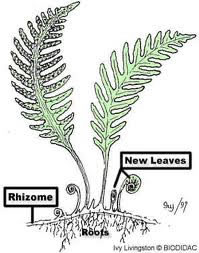 (Figure 11) They move any which way in a multiplicity of directions until met by a blockage, and then move up, over, under, or around. We won't do much on this one. Rhizomes can be a good thing, or a bad thing; depends on how you harvest them, what you do with them when they invade your landscape. You already know what a rhizome is. It is those above ground wilting leaves, and vines and runners along the surface, and it is those root-stems below ground making new tubers, six of which are quite common and you know them all too well.
(Figure 11) They move any which way in a multiplicity of directions until met by a blockage, and then move up, over, under, or around. We won't do much on this one. Rhizomes can be a good thing, or a bad thing; depends on how you harvest them, what you do with them when they invade your landscape. You already know what a rhizome is. It is those above ground wilting leaves, and vines and runners along the surface, and it is those root-stems below ground making new tubers, six of which are quite common and you know them all too well.  Figure 12 - Rhizomatic movement (source)
Figure 12 - Rhizomatic movement (source)- Composite spirals that have linear-, cyclical-, and rhizomatic-antenarrative processes is what we are focused upon in our small organization consulting.
Q-Spiral business processes may be invisible to the business participants and to the consultant. That is because, many folks assume that a business process is a linear affair, a straight line with a bunch of steps that are repeated, the same way, in the say place, by the same people, and the same machines, with the same materials, controlled by supervision and training, and just keeps repeating, into the future, just as it was in the past, and is now.
Yet, research shows most of what is considered linear-process-steps, is really more of a cycle, a bent line. But here again the spiral can be invisible to everyone, since in assuming there are only cycles, no one will see spirals (Abbott. When a cycle of production, or ordering, or marketing, or strategy, repeats exactly as before, without any deviation it's OK to call it a 'cycle.' But when the steps, materials, workers, the way of working the steps, or a particular new step is added or subtracted, it is no longer the same cycle as before. It is either a move of continuous improvement or a move that is dysfunctional (defined as deficient or excess in some way). A dysfunction is the middle path (or trajectory) between deficient and excess (Aristotle, 350 BCE). When it is deficient the materials, quality, training, competence, etc. is a dysfunction. When it is excessive, then material, time, training, skill, man-hours, money is wasted. If you compare a production or quality or order or marketing or inventory or accounting cycle, to its predecessors, you will find there are differences. Some differences are good, such as continuous improvement, innovation, cost-saving steps, labor-saving steps, better use of materials, more fashionable, etc. Many differences are bad, such as wasted energy, wasted materials, overtime, overcompensation, overconsumption, delays, over-budget, etc.
Differences (good & bad) accumulate, and the cycle becomes a spiral. Most cycles become spirals. 99% of all cycles, from cycle-to-cycle of their repetition, are different, and either amplify or contract, and are more properly called, 'Spirals.' The middle road between deficient and excessive cycle activities is called the 'middle path' of the spiral.
For example, compare linear, cyclic, spiral, and rhizome-antenarratives on the following theme. I left the table unfinished after Joint Venture Conflict, so you could add your own searches. Begin by comparing some work out there on a theme of your choice, and pick up the visual Geometric Storytelling images that are popular. I used Google Search (explained below).
Table 1: Antenarrative Matrix of Geometric Storytelling Themes
THEME |
LINEAR |
CYCLIC |
SPIRAL |
RHIZOME |
Addiction |
[more] |
[more] |
[more] |
[more] |
Anxiety |
[more] |
[more] |
[more] |
[more] |
Blame |
[more] |
[more] |
[more] |
[more] |
Capitalism |
[more] |
[more] |
[more] |
[more] |
Cash-to-cash |
[more] |
[more] |
[more] |
[more] |
Child Labor |
[more] |
[more] |
[more] |
[more] |
Competition |
[more] |
[more] |
[more] |
[more] |
Conflict |
[more] |
[more] |
[more] |
[more] |
Conflict Global |
[more] |
[more] |
[more] |
[more] |
Conflict Joint Venture |
[more] |
[more] |
[more] |
[more] |
Conflict Workplace |
[more] [image] |
[more] [image] |
||
Economic Collapse |
[more] [image] |
[more] [image] |
[more] [image] |
|
Economic Prosperity |
[more] |
[more] |
[more] |
[more] |
Efficacy |
[more] |
[more] |
[more] |
[more] |
Emotional Blackmail |
[more] |
[more] |
[more] |
[more] |
Environmental destruction |
[more] |
[more] |
[more] |
[more] |
Ethnic discrimination |
[more] |
[more] |
[more] |
[more] |
Exploitation |
[more] |
[more] |
[more] |
[more] |
Failure |
[more] |
[more] |
[more] |
[more] |
Fear |
[more] |
[more] |
[more] |
[more] |
Injustice |
[more] |
[more] |
[more] |
[more] |
Insecurity |
[more] |
[more] |
[more] |
[more] |
Inventory Turns |
[more] |
[more] |
[more] |
[more] |
Knowledge Management |
[more] |
[more] |
[more] |
[more] |
Leadership |
[more] |
[more] |
[more] |
[more] |
Market life |
[more] |
[more] |
[more] |
[more] |
Ordering |
[more] |
[more] |
[more] |
[more] |
Organization life |
[more] |
[more] |
[more] |
[more] |
Plunder |
[more] |
[more] |
[more] |
[more] |
Poverty |
[more] |
[more] |
[more] |
[more] |
Product |
[more] |
[more] |
[more] |
[more] |
Production time |
[more] |
[more] |
[more] |
[more] |
Productivity |
[more] |
[more] |
[more] |
[more] |
Program Evaluation Review |
[more] |
[more] |
[more] |
[more] |
Racial intolerance, racism |
[more] |
[more] |
[more] |
[more] |
Sexism |
[more] |
[more] |
[more] |
[more] |
Subsidies |
[more] |
[more] |
[more] |
[more] |
Sustainability |
[more] |
[more] |
[more] |
[more] |
Turbulence |
[more] |
[more] |
[more] |
[more] |
Unsustainability |
[more] |
[more] |
[more] |
[more] |
Urban renewal |
[more] |
[more] |
[more] |
[more] |
Wage Expectations |
[more] |
[more] |
[more] |
[more] |
Workplace Violence & Incivility |
[more] |
[more] |
[more] |
[more] |
In doing the search for linear, I used [topic] plus linear model. For searching cyclic-, spiral-, and rhizome, I used [topic] plus either cycle, spiral, or rhizome. Where the Google search showed scholarly link to the topic, I used that one. It is significant that most of the cycles recognized in web documents are only indirectly related to issues of sustainable development. Those above tend to emphasize the linear model of cycles, the experiential nature of the cycles, how cycles turn into spirals, or the linear into rhizomes. The rhizome links need to be cleaned, since some sites are called ‘rhizome.’ The next step would be to develop lists of scholarly articles in each cell of the matrix, and links to typical visual images. I did not search on the word ‘antenarrative’ itself. However, many of items showing up in the search can be read with an antenarrative concept.
The idea for an integrated spiral theory would be to put multi-directionality into the same spiral model instead of having separate upward, downward, amplifying, counteracting spirals. It would also be interesting and perhaps helpful to look at multiple themes in the same spiral model. Such a spiral model could be contrasted with linear-, -cyclic, and rhizomatic-antenarrative models of organization and environment.
Spirals have been treated dualistically (either/or) in the traditional literature as either/or, either upward spiral, or downward spiral. Here is a typical example of upward organizational spiral.
Here is an example of upward spiral, this time of global trends. What is exciting about it is that the environment of organizations, its upward spiraling strands are being addressed. This is a good place to begin your organization consulting. List the upward and the downward spiral trends for the organization you are consulting.

Figure 15 - Upward Global Trends (30 upward spiral global trends)
Next the downward spiral environmental trends affecting organizations are depicted.

Figure 16 - Upward Global Trends (30 upward spiral global trends)
Your next task is to combine the upward and downward forces of an organization and its environment into one Q-Spiral configuration along with the various environmental trends. We will take this in stages.
An organization can be depicted as a Q-Spiral, with upward and downward paths (ups and downs in same organization trajectory). We will do this, then depict the overall environmental forces acting upon the organization's spiraling processes, structures, and behavior-habits.
An organization consultant tries to help the client create better processes, structures, and behaviors, and those are spiraling, in good ways, and in bad ways, depending upon the socioeconomic situation.
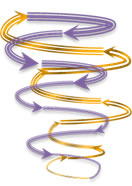
Figure 17 - Basic Q-Spiral model of organization Processes (drawing by D. Boje, 18 July 2012
This is a Q-Spiral Model (Boje, 2012g). A Q-Spiral is defined as a 'Quantum'-spiral that has both upward and downward spiraling directions in the same enterprise (indicated by the Gold & Purple arrows). 'Q' stands for Quantum, meaning the spaces, times, and mattering of the organization processes. All small organizations have both upward and downward spiraling processes. There are positive upward spirals (gold arrows) in the organization processes where continuous expansion and improvement is happening, such as expanding production with higher quality, and hopefully lower costs, bringing on more workers with better training, and having more efficacious communication, coordination, and cooperation (I call this storytelling in words and action). And there are at the same time and place, negative downward spirals from dysfunctions in the organization (purple arrows) that we can read from various measures: escalations of costs, more incivility, more conflict, less quality production, more overpayment of salaries and wages relative to production quantities, more injuries, more absenteeism, more turnover of your best people, loss of market share, unsustainable environmental waste, more risks to everyone and everything.
A 'Q-Spiral' is not a Archimedes Spiral (does not have equal distance of each cycle or whorl relative to its axis of rotation). It is not a singular one-armed Logarithmic Spiral (does not have a factor of progressive increase or of decrease in a single direction). It has two inter-twined spiral arms (gold & purple), that are linked at the top and bottom, so its proper type, is a Lorentz Spiral (a spiral that shifts in directionality at two focal points). When we start to notice that Q-Spirals have bridging spirals between whorls, and off-shoot-spiral buds (known technically as fractal-spirals), then we have a more comprehensive model of organization processes, that is a more accurate depiction of the actual organization processes.
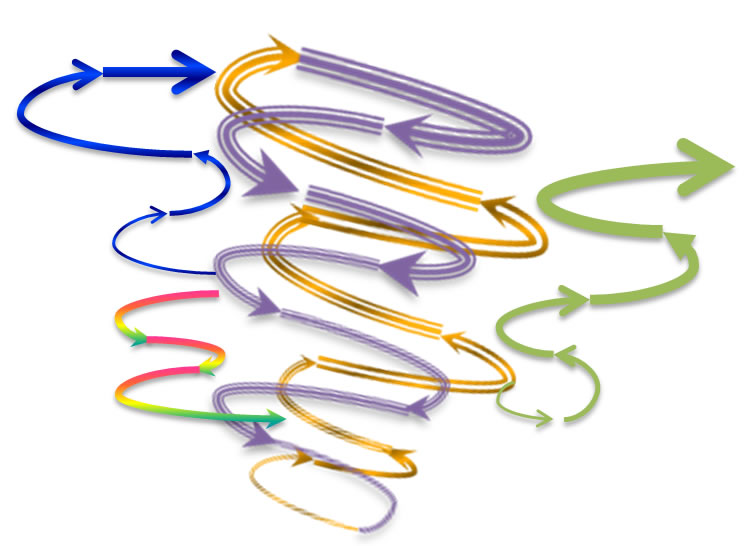
Figure 18 - A Q-Spiral Model of the Processes of a organization with Bridges between Whorls, and a Fractal-spiral off-shoot (Drawing by D. Boje, July 18, 2012)
This is a Q-Spiral with two bridges between the main-whorls. The Blue bridge-spiral allows movement of people, storytelling, and materials between a downward spiral (Purple) and an upward spiral that is more positive (Gold) nearer the top of the Q-Spiral where momentum forces are less severe, and the rides are slower. The Rainbow bridge-spiral allows movement of people, storytelling, and materials between a downward spiral (Purple) and an upward spiral (Gold) near the base where the whirls are at a higher speed and it is more difficult to break free of the momentum. Finally, there is an Off-shoot fractal spiral, such as a new product innovation, a new organization location, that is still feeding off the main Q-Spiral.
Q-Spiral organization processes may be invisible to the participants and to the consultant. That is because, many folks assume that a organization process is a linear affair, a straight line with a bunch of steps that are repeated, the same way, in the say place, by the same people, and the same machines, with the same materials, controlled by supervision and training, and just keeps repeating, into the future, just as it was in the past, and is now.
Yet, research shows most of what is considered linear-process-steps, is really more of a cycle, a bent line. But here again the spiral can be invisible to everyone, since in assuming there are only cycles, no one will see spirals (Abbott. When a cycle of production, or ordering, or marketing, or strategy, repeats exactly as before, without any deviation it's OK to call it a 'cycle.' But when the steps, materials, workers, the way of working the steps, or a particular new step is added or subtracted, it is no longer the same cycle as before. It is either a move of continuous improvement or a move that is dysfunctional (defined as deficient or excess in some way). A dysfunction is the middle path (or trajectory) between deficient and excess (Aristotle, 350 BCE). When it is deficient the materials, quality, training, competence, etc. is a dysfunction. When it is excessive, then material, time, training, skill, man-hours, money is wasted. If you compare a production or quality or order or marketing or inventory or accounting cycle, to its predecessors, you will find there are differences. Some differences are good, such as continuous improvement, innovation, cost-saving steps, labor-saving steps, better use of materials, more fashionable, etc. Many differences are bad, such as wasted energy, wasted materials, overtime, overcompensation, overconsumption, delays, over-budget, etc.
Differences (good & bad) accumulate, and the cycle becomes a spiral. Most cycles become spirals. 99% of all cycles, from cycle-to-cycle of their repetition, are different, and either amplify or contract, and are more properly called, 'Spirals.' The middle road between deficient and excessive cycle activities is called the 'middle path' of the spiral.
What are organization Processes? organization processes are modeled as lines (linear step-by-step from point A to point B), cycles, spirals (cycles that became spirals), and rhizomes (networks of lines). Each model is a better or worse approximation of the processes of the organization. A organization has many different linear-, cyclic-, spiral-, and rhizomatic-processes. For example, in the production process there can be several production lines, assembly lines, and in each materials and parts are worked on by people and machines. This occurs in production and assembly cycles. A cycle is defined by a number of stages that are in a sequence that repeats. The cycle either repeats with sameness (same stages, no deviations), or the cycle repeats with differences (either in continuous improvement, or in continuous dysfunction of excess or deficiency). For example, continuous process improvement means one cycle to the next, there are positive differences. When cycle-to-cycle deteriorates, and has lots of dysfunctions in quality, lateness, out-of-specification, not what was ordered, shoddy workmanship, and so forth, then it is taking a downcycle. When cycle-to-cycle has positive and/or negative differences one to the next round, then it becomes a spiral. There are positive and negative spirals (upward and downward spirals) in the same small organization. In the next figure there are positive upward spirals (gold arrows), downward negative spirals (purple arrows).
Every small organization operates in an environment with other organizations, suppliers, customers, community where employees live, and material resources.
Figure 19 - Three Dimensions of Environment of a Small organization
There are locations in a organization environment where the enterprise will get more customers, find more qualified workers, find lower cost materials, and achieve better profits. In this figure the better places are in the peaks, and steeper peaks are more rugged, harder to get to, but more profitable if you can get there and stay there. However, other organizations seek these same locations at the top of the peak areas. Peaks can get crowded. It can take more resources and energy than desired to hold a peak position against rivals. The environment has three key dimensions.
- Performance is defined as the outcomes of strategic moves enacted in the environment. Higher peaks have greater performance opportunities, but steeper peaks have higher costs, and more organizations attempting to get there.
- Landscape is defined as “realistic problem-solving complexity with clarity” (Afuah and Tucci, 2012: p. 357; Kaufman, 1993, 1995). Landscape is spatial in combination of ways: perceptions of space, measured spaces, and meanings of space to participants.
- Timescape is defined as measured time, timing of strategies, retrospective-histories, and anticipated-futures (Adam, 1998)
The larger silver arrows are updraft and downdraft forces in the organization environment. For example, in solar energy in New Mexico, in 2010, tax incentives were implemented in the state of New Mexico that give some momentum for customers, suppliers, and organizations in the solar sector of the economy to go Green. It had been a dozen or so years, since there were tax incentives, and that was a downdraft force on the entire solar organization sector doing insulation, photovoltaic, and solar water heating.

Figure 20- The Q-Spiral organization Processes in its organization Environment (drawing by D. Boje, July 17 2012)
It has path choices indicated by the red lines. The red + is a choice point of which path direction to choose in an environment. The larger silver arrows are the updraft and downdraft forces of the environment, such as the changes in tax incentives in the example just stated.
Figure 21 - Q-Spiral Movement from Point A to Point B in its Environment in 3 Dimensions (Boje, 2012).
In this depiction, the Q-Spiral traverses its Environment from Point A to Point B. It is about to climb a lesser steep and rugged peak at Point B. It could have made different choices, and moved along the red dotted lines, in the channels already in the Environment. At the right of position B is a red-dotted pathway leading up a higher peak, a more profitable, and higher revenue peak. It could be in a consulting project, the next Quantum Leap the organization takes. In this model, there are three inter-related interdependent dimes ions of the Environment: Performance peaks (better revenue, higher quality, lower costs, more expansion, more market share, etc.), timescape (all the different ways time is manifest from clock time, calendar deadlines, timing of strategy, histories, the future arriving ahead-of-itself in foretelling of strategic moves, etc.), and landscape (all the ways of space, from layout, hierarchy, market place, and places).

Figure 22 - Three D-P-I-E Cycles become an Upward Spiral of Continuous Improvement - Drawing by Boje July 6 2012
The following is NOT a spiral, but it is called one.

Figure 23 - Upward Knowledge Spiral is actually a Stack of Cycles (adapted Nonaka, et. al, 2000: 6).
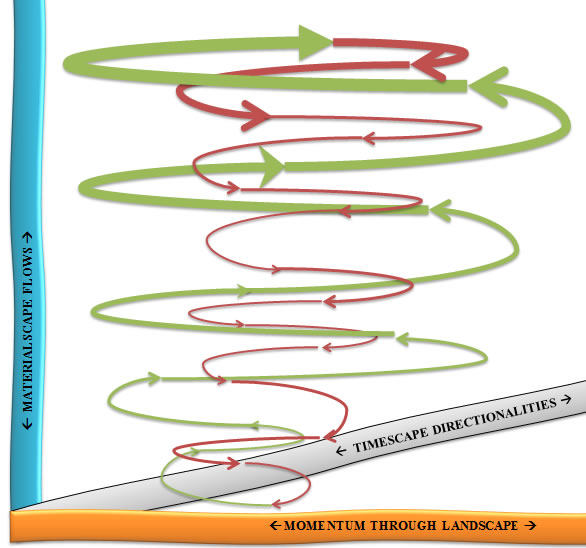
Figure 24- 3D display of Q-Spiral entity (Drawing by D. Boje July 5, 2012)
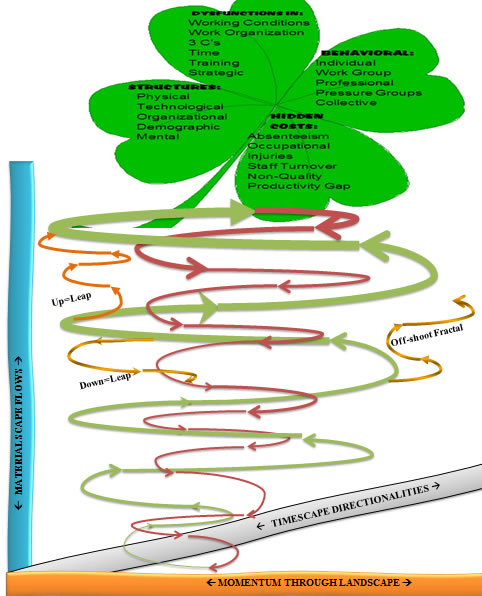
Figure 25 - Q-Spiral with f-spiral off-shoot-fractal, and two f-spiral leaps connecting across the green-to-green and the green-to-red Q-spiral-twirls (Drawing by D. Boje 5 July, 2012)

Figure 26 - Waddington's depiction of marbles traveling among channels of a landscape to reach lower regions of optimal development
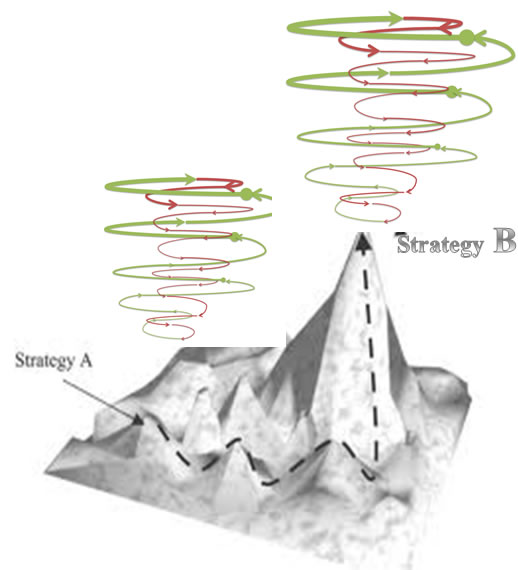
Figure 27 - Strategic Move on Environment
In these figures a Q-Spiral (organization) moves in its competitive environment to a higher performance-peak location
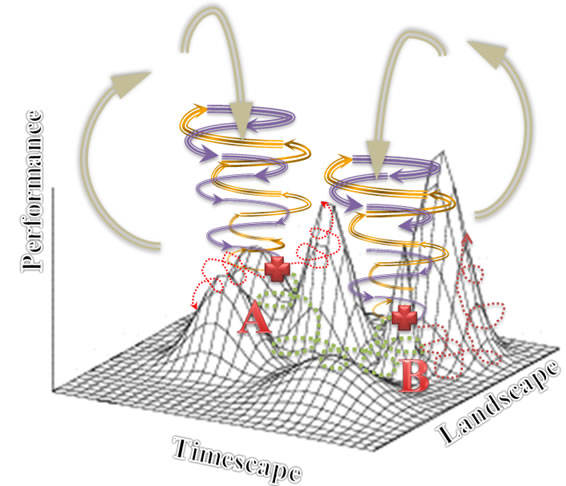
Figure 28 - Strategic moves of Q-Spiral in Environment with 3 dimensions (Drawing by D. Boje July 2012)
KEY:
- + Choice-Points where green is trajectory actually taken by organization from point ‘A’ to point ‘B’, and red dotted lines are trajectories not taken yet still remembered what might have been.
- Gold Arrows => Positive directions of organization Spiral Episodes going with flow of environmental updrafts and against the flow of environmental downdrafts
- Purple Lines => Negative directions organization Spiral Episodes going with flow of environmental downdrafts, and against the flow of environmental updrafts
- Green Dotted line => Trajectory in the fitness environment
- Red Dotted lines => Null paths not taken at choice-points
- Silver Arrows => Updrafts and downdrafts of the oscillations in the competitive environment
Three Dimensions of the organization Environment:
- Performance is defined as the outcomes of strategies enacted in the environment. Higher peaks have greater performance opportunities, but steeper peaks have higher costs, and more organizations attempting to get there.
- Landscape is defined as “realistic problem-solving complexity with clarity” (Afuah and Tucci, 2012: p. 357; Kaufman, 1993, 1995). Landscape is spatial in combination of ways: perceptions of space, measured spaces, and meanings of space to participants.
- Timescape is defined as measured time, timing of strategies, retrospective-histories, and anticipated-futures (Adam, 1998).
In the above depiction, for example, a organization Q-Spiral entity traverses in spacetime from Strategy A location to Strategy B location in its environment. Was this a better move?
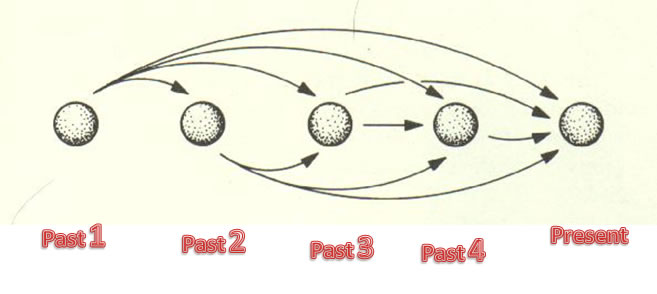
Figure 29 - Sheldrake's attempted integration of Landscape with Timescape (Drawing by D. Boje, adapted from Sheldrake 2009).
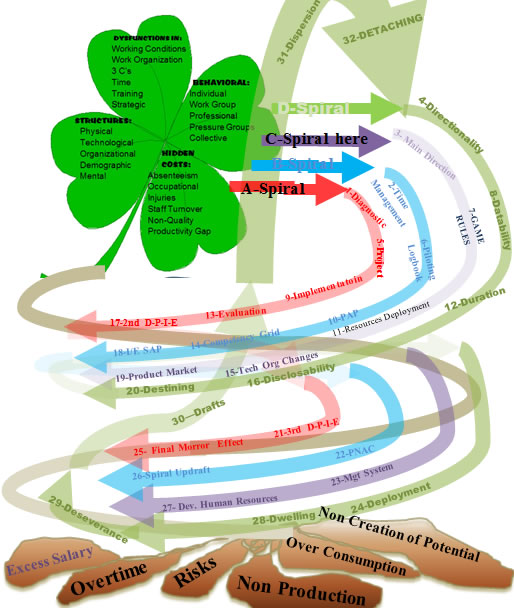
Figure 30 - Course Model of 5 f-spirals A, B, C, & D and steps to follow (numbered)

Figure 31- Five dimensions of f-spiral A-B-C-D-E transformation of the small organization to apprehend the Big 'Q'-Spiral-Updraft (Adapted by Boje from p. 26 of Savall et. al book)
For transcribed examples of answers to questions below, please see http://peaceaware.com/lille/Lille_Storytelling_Methodology.pdf. If you find it helpful show your client Boje's YouTube film on blacksmithing small organizations, then ask these 11 questions.
Table 2 – 11 D’s of Quantum Storytelling and the Questions asked of Blacksmith artists
11 D's |
Q to ask your client |
Where it helps you Client Consultation |
Directionality |
1. What is the directionality of the small organization processes; to what future are they headed? | Axis C: Direction. This is not compass direction, it is strategic direction, arriving from the future-->present. |
Datability |
2. What is the datability of the small organization process developments? | 4-Leaf Structures: Important pivotal dates where technical processes, physical and other structures were acquired |
Duration |
3. What is the duration of various small organization processes? | Axis C: Strategic Choices - helps sort out how long various strategies have been in effect |
Disclosability |
4. What is the disclosability of the future small organization processes revealed to you? | Axis A - projects that disclose a future, Axis B - PAP and I/ESAP; SI in top leaf. The future is arriving into the present, presenting a set of potential futures, in the choice points in Axis C |
Destining |
5. What is the destining of the processes unfolding in ways you can foretell? Follow up, in fore-caring, fore-structuring, fore-having, fore-conceiving. | Axis B: PAP & I/ESAP; Axis C - all items. This is weak destiny, where even where the is momentum and carved channels in the market, there are also choice-points among futures |
Deployment |
6. What is the deployment of small organization processes, in-order-to, for-the-sake-of? | Axis B: PAP & I/ESAP; Axis C - all items. Look at existing processes of production, distribution, & consumption. How are these processes deployed. How could they be? |
Dwelling |
7. What is the dwelling, in-place in the world of small organization processes? | Knowing place in the market, in the state, etc. lets them sort out Axis B: PAP & I/ESAP; Axis C - all items |
De-severance |
8. What is the de-severance (de-distancing) of space-time-mattering? | De-severing space is bringing something far close. De-severing time can be bringing a future potential into the path of SAP and I/ESAP and the Axis C choice-points. |
Drafts |
9. What are the drafts, updraft, and downdraft, into tighter (down) orbits, or into more open outer orbits (up), and the turning points from one draft to another? | Axis A, B, & C. This is where the client and consultant sort out strategic choice points, moving into more updraft spiral-antenarratives, ascending into more potential |
Dispersion |
10. What is the dispersion of processes, too diverse, or consolidating them? | This can free up resources to invested in more strategic processes, letting go of low-value added activities |
Detaching |
11. What is the detaching from being drawn into they-ness, they-relations, they-self and finding a path of ownmost authentic potentiality-for-Being-a-whole-Self? | Following the they-crowd is not great strategy. Developing into whole-Self potentiality fits well with Axis C |
The 11'Ds are concepts explained at the http://peaceaware.com website and in the 'Quantum Storytelling' online textbook. and in the YouTube video.

Figure 32 - Mandelbrot Fractal-Spiral that is an example of Boje's 'Q-Spiral' with high density of inter-connections, off-shoot fractal spirals being produced.
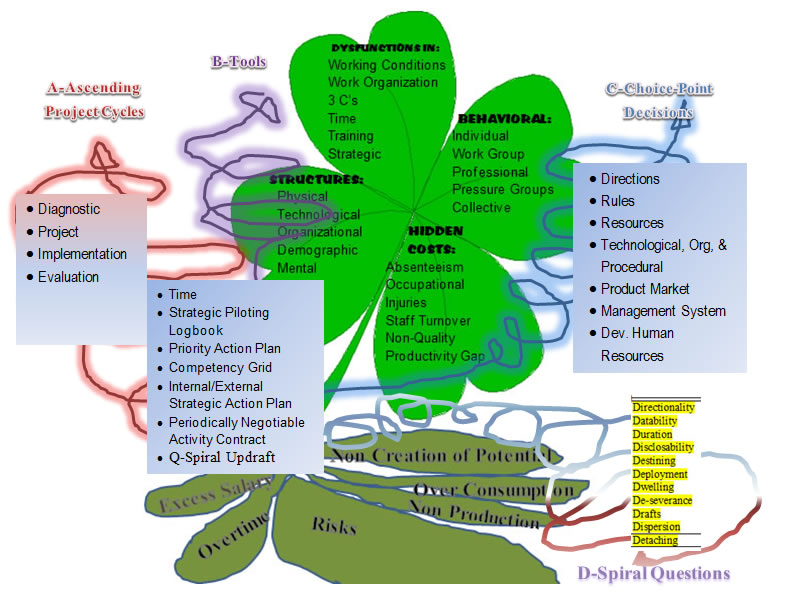
Figure 33 - the 4-Leaf in context of Triple A-B-C-D little f-spirals

Figure 34 - What direction will small organization take at the cross-roads?

Figure 35 - the 'Q-Spiral depiction from Berkeley
Figure 36 - Multiplicity of f-spirals. The above example is from Franken & Braganza (2006).

Figure 37 - The Triple-spiral in Celtic history.

Figure 38 -the Triple-f-Spirals, A-B-C
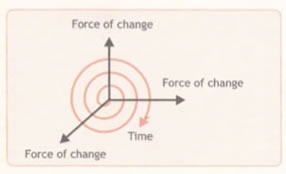
Figure 39 - The single f-spiral of time (red line in the figure See your Savall et al. (2008) book p. 26
Here is the 4-leaf with its below ground root-stems: 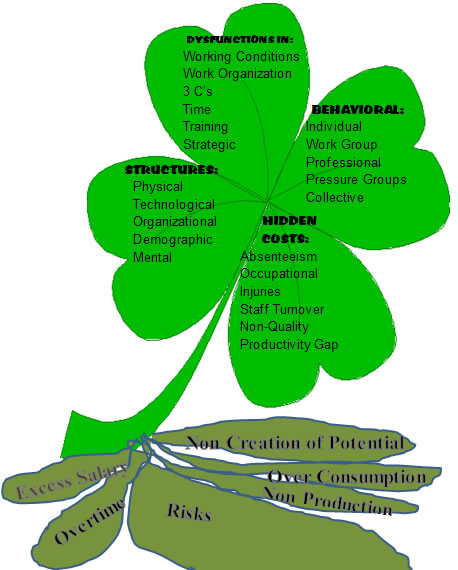
Figure 40 - 4-Leaf-Clover with 6 below-ground tuber root-stems (adapted from Savall et al., 2008: p. 33 & p. 124)
HOW IT ALL FITS TOGETHER? THE 'ACTION INTERVENTION'

Figure 41 - Implementation Diagram - Boje (2012)
Click here for Word version of this chart to fiddle with for your report.

Figure 42 - Illustration of minimal f-spiral evolving and transforming into robust Q-Spiral of higher complexity

Figure 43 - from simple f-spiral to complex and inter-connected Q-Spiral, and back again
The purpose of this next section is to answer your questions as they come up in class or in emails.

Figure 44 Tonya Garcia - original graphic of the 4-leaf with spiraling Axes and below-ground tuber root-stems (used with permission of artist).
